Norway’s Lofoten draws tourists from all over the world, but it also has a fascinating history. From the Viking Age through to the development of Norway’s thriving fishing and seafood industries, this is the story of Lofoten.
The Lofoten islands in Northern Norway are known today as a popular tourist destination. Their natural beauty attracts hikers, photographers, and even surfers to the north. But Lofoten also has a rich history.
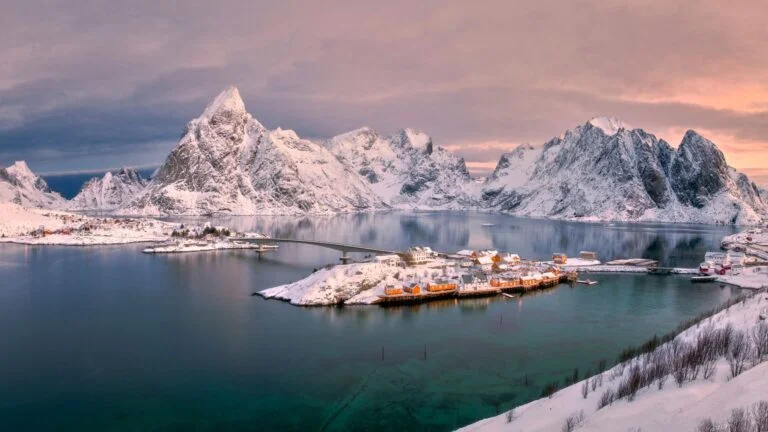
Evidence of human activity is said to date back at least 11,000 years. People have been calling the islands home almost as long as anywhere else in Northern Europe. Join me as I take a look at why that is.
Until the 1960s, Norway’s biggest industry was cod. In many ways, the history of Norway is the history of cod fishing. And nowhere in Norway is more important to cod fishing than the Lofoten Islands.
Lofoten in the Viking Age
There’s evidence that humans lived on Lofoten before the Viking Age. Archaeological digs from the late stone age, some 5,500 years ago, show clear signs. There’s also some evidence dating back earlier than that. But the main evidence, that we can build a picture from, is from the Viking Age itself.
The town of Vågan is the first known town formed in all of Northern Norway. It was located on the southern cost of East Lofoten and is close to the modern village of Kabelvåg, not far from Svolvær.
Many of the archaeological finds we have, from the Iron Age and Viking Age, can be found farther west near Borg on Vestvågøy.
During the Viking Age, chieftains ruled through a mixture of alliances and strength. Strategic marriages and soft power – giving gifts and throwing feasts – were as important as fighting battles and killing enemies. If you think about it, it’s better to leave people alive as long as you can get them to do your bidding for you!
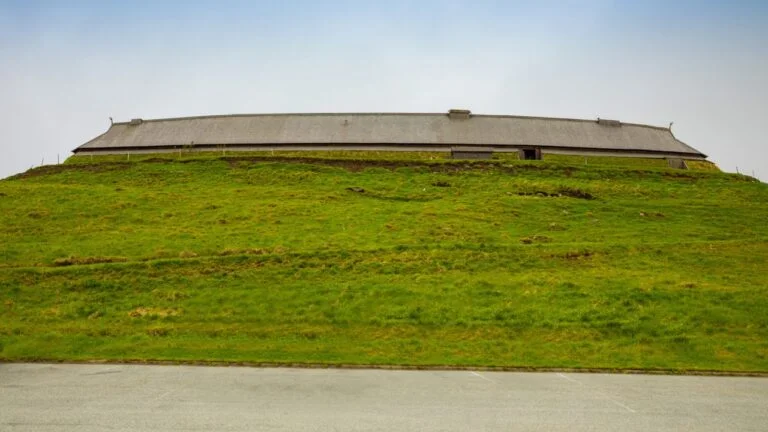
One chieftain we know of from Borg was the fearsome Oláfr. As well as being known was Uni-brow, he was also said to be a hamrammr; a skin-changer or werewolf. That alone was probably enough to maintain his reputation of strength and allowed him to rule over the fertile lands in the east of Vestvågøy.
In his grave we find, among other things, gold-leafed glassware from abroad. This would have been very rare, and marks Oláfr out as a well-connected and powerful man.
King Olav and Lofoten
Also famous in the history of the area was Thorir the Stag (Þórir Hjort) from Austvågøy. He was known mainly as an opponent of King Olav Tryggvason, who united Norway and started the Christianisation of the country.
Olav was a ruthless conqueror of lands and many chiefs converted without bloodshed, unwilling to challenge the King in battle.
Thorir, however, was a staunch opponent of the king and decided to stand up to what he saw as tyranny. A bloody battle ensued with massive losses on both sides. Eventually the King was victorious, but it was a significant point in their history.
In most accounts, the King killed Thorir personally by throwing a spear at him. Some say that when his body fell to the ground a stag leapt out and ran into the forest.
Vågan would soon become the power centre for the region and the local assembly (Thing or Þing) was held there. King Olav and his successors would soon start to make a large amount of money from the area thanks to Lofoten’s most useful resource: Cod.
There’s something in the air
If you arrive in Lofoten in early summer, you’ll start to smell the unmistakeable aroma of fish in the air. It’s not simply the smell of fishing villages but something stronger. The reason for this is tørrfisk, or stockfish.
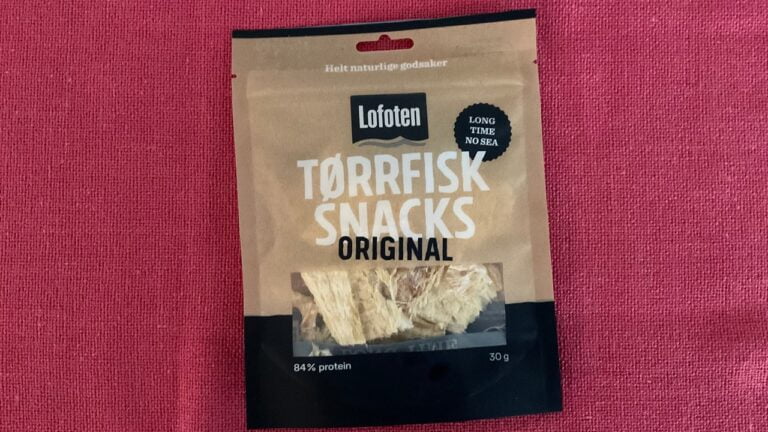
Having a huge quantity of cod, and sitting almost at the top of the world, is not all that useful. You can sell locally and probably sell to the whole company without your fish going bad. There are ways of preserving the meat, of course, salting, smoking and icing for example, but they can be expensive.
Lofoten, however, has several advantages when it comes to cod. In this case, it’s the strong maritime winds blowing off the Norwegian Sea.
Residents found that by hanging the fish in the wind, the meat would dry and then could be stored and transported almost indefinitely, at no extra cost! Once soaked in water, the meat is rehydrated and becomes almost as good as new.
This is an incredible method of preserving food that is unique to Lofoten. Many other places have tried but the air is either too wet or too dry and the temperature is either too hot or too cold.
Sales of Norwegian stockfish—the name given to dried cod—around the world were huge and the vast majority came from Lofoten. Trade in Lofoten stockfish carries on to this day and you can find supplies in most countries around the world.
Location, location, location
Lofoten is not simply great for fishing because it’s on the coast. There’s a natural advantage. Through most of Northern Norway, the waters are very cold. This is great for breeding string healthy fish but it’s not so great for spawning. The cold waters are too harsh for young fish to survive, so the fish need to swim south to breed.
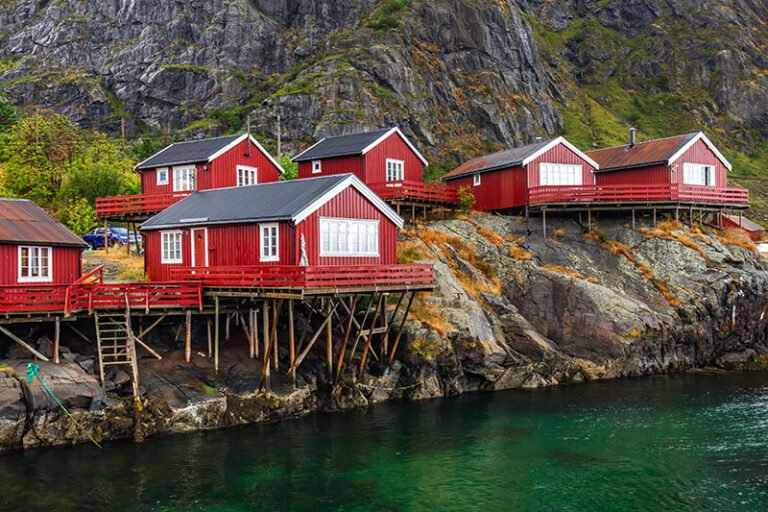
Lofoten, however, is surrounded by relatively mild water. The influence of the Gulf Stream, North Atlantic Current and Norwegian Current combines to make the climate and waters in the area much warmer than they would normally be.
The area is, in fact, home to the biggest anomaly in temperature related to latitude anywhere in the world.
All of this means that Lofoten provides the perfect spawning conditions for Arctic cod. Every winter, cod swarm the seas in their thousands, providing rich pickings for fishermen.
Lofoten is so perfect for cod fishing, in fact, that fishermen would come from all over the world to help get as much of the fish landed as possible to ensure global supplies were maintained.
This led to the construction of the rorbu – simple cabins constructed to house the visiting fishermen. These were started in the year 1120 when King Øistein ordered them to be built. These were two-room cabins, often on stilts, right near the water.
The name rorbu roughly translates as ‘small house for people who row’ and they can still be seen in Lofoten today. Nowadays they’re not so much cabins to house travelling fishermen but simple – and sometime luxurious – accommodation for the Island’s tourists.
Lofoten in Norse Mythology
Known as Ketils Saga Hœngs, the Saga of Ketill Trout forms part of the Icelandic legendary sagas. These are the stories of old Scandinavia, before Iceland existed, that give us most of our knowledge of early Norse folklore, history and customs.
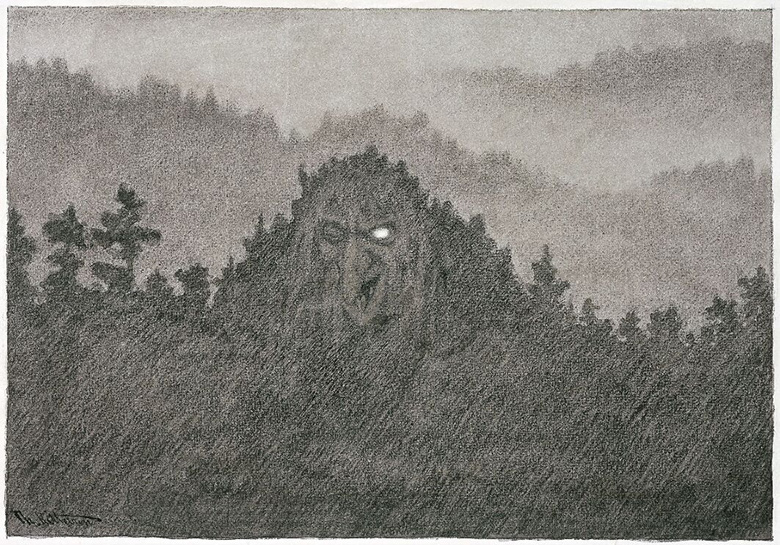
From Hrafnista came a man called Ketill, son of Hallbjörn Half-troll. His father, as the name suggests, was a strong, mighty and fearless man who was respected by all. Ketill, however, was the opposite of his father. He was quiet and he lacked the spirit of adventure usually bestowed on heroes in mythology!
When times grew hard, and Ketill was a teenager, he grew sick of having no food and decided to do something about it. Borrowing his family’s boat he snuck off in the night and rowed North.
He found great fishing lands and filled his boat with abundant fish. As he beached his boat for the night, he found a pit filled with the flesh and bones of humans and other animals. Ketill had accidentally stumbled on an island of cannibal trolls!
He was unable to make his escape without facing Surtr the Black and Kaldrann the Cold Moustache. Ketill managed to fend them off long enough to escape and he returned home victorious, with a ship full of fish and a great tale to tell.
That wasn’t Ketill’s only adventure, however. A few years later the famine returned and so this time Ketill rowed even further, all the way up to Lofoten, where he filled his ship with the bountiful cod. On the island of Skrova in East Lofoten he encountered two troll women who warn him that the Tröllaþing – meeting of trolls – is taking place that night.
Ketill witnessed the most fearsome and gigantic of trolls gathering on the island. He was magic and sorcery that no human had ever seen before. Fearing for his life he hid himself under a thick blanket of branches and leaves and kept himself awake to avoid giving himself up to the trolls.
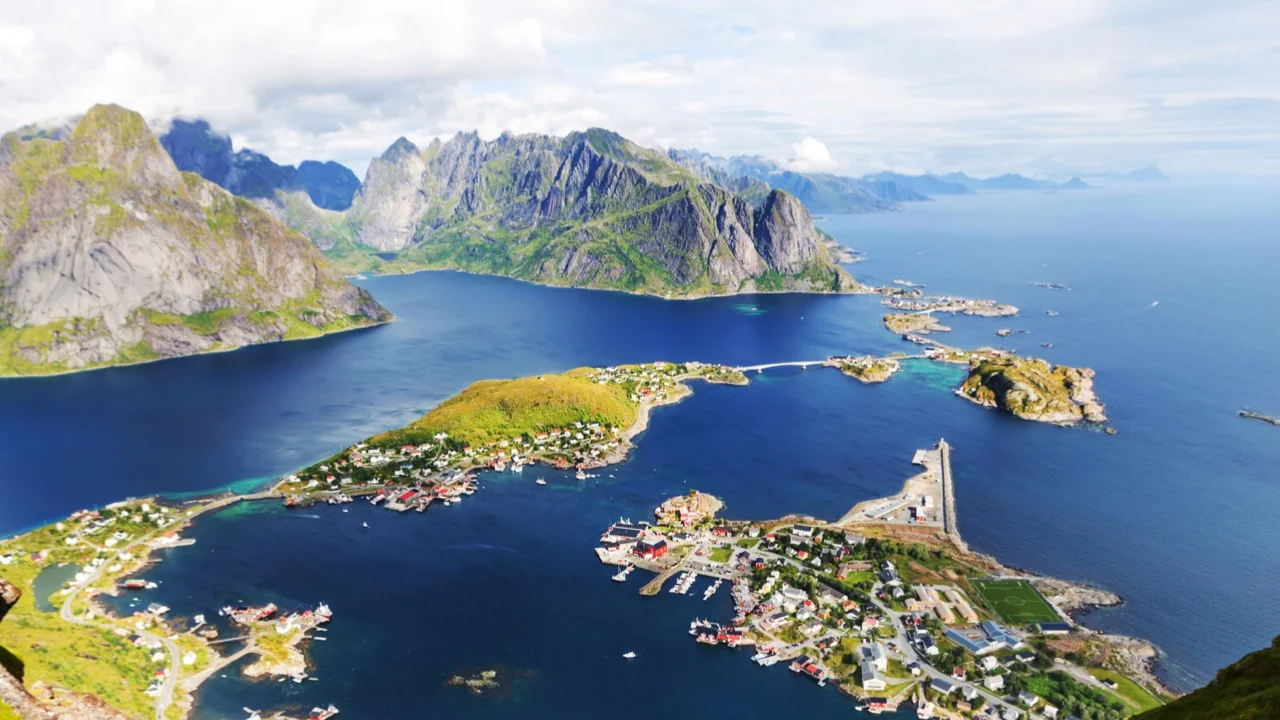
Once again, Ketill returned home a hero and that was his last adventure to Lofoten.
The Italian cod
If you think Lofoten is remote then Røst, some 10km away from the rest of Lofoten and 100km away from the mainland sets new standards of remoteness!
Like Lofoten, the area of Røst – consisting of 350 islands and skerries in total including the main island, Røstlandet – is hugely centred around fishing and, in winter, the population increases by 3 or 4 times.
We don’t always have the exact story about how trade routes open up. Many of them date to before the times when humans were routinely keeping track of their history. But in the case of the Norway-Italy stockfish trade we have all of the details.
In 1432 the Venetian sea-captain Pietro Querini was shipwrecked and was rescued by the islanders of Røstlandet. Out of 68 crew, only 11 survived, being found a month after they were originally shipwrecked. They stayed in the area for three months before returning to Venice.
After returning home Querini provided a great description of the medieval life of the people there. He described how they lived by catching and drying cod and how the people were pious and harmonious.
Querini took some of the delicious and versatile Stockfish also popularised it in the Venice area. It is still served there today and is known as Baccalà all vincentina. And that’s how a random 15th century shipwreck gave rise to a global trade route in Stockfish and a signature dish that survives to this day!
Lofoten in wartime
There are so many fascinating stories about Lofoten’s role in World War II, of which many outside Norway know nothing. To set that right, we’re going to be publishing an article all about Lofoten and World War II in the weeks to come, so watch out for that.
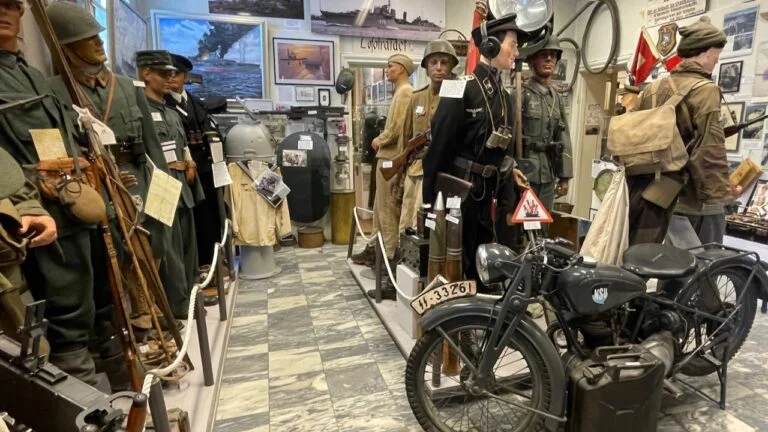
In the meantime, you can check out my other article on Operation Claymore. If you’re in Svolvær, it’s well worth stopping by the Lofoten War Memorial Museum to learn more.
See history for yourself
The Lofoten Islands are one of Norway’s prime tourist attractions. Hopefully this article has given you a greater appreciation of why that is. It can be a bit of a trek, but if you visit, you’ll find a number of museums that can give you more of a taste of Lofoten’s unique character and heritage.
Firstly, there’s the Lofotr Vikingmuseum, which includes a reconstruction of the largest Viking Longhouse ever discovered. Just 40m from the archaeological dig site, and measuring over 80m long, the house gives a real feel for the life of our Viking ancestors and how they lived.
SKREI encompasses the Lofoten Museum, Lofoten Aquarium and Espolin Gallery. These three all show much about the life and history of the archipelago. The museum is housed in a 19th century manor house and you can see the contrast between this and the rorbu seasonal accommodation and glimpse the small wooden fishing boats.
In the aquarium, you’ll see a great selection of the local fish that can be found in the waters off the coast. There’s plenty of cod to be seen too, of course, and you can learn about their life cycles and the part they play in Lofoten and Norway’s history.
The Espolin Gallery showcases the work of Kaare Espolin Johnson who was inspired by the natural beauty of Lofoten. As well as seeing many examples of his art you can also watch a video in which the artist himself, who only passed away in 1994, talks about the area and his work.
Finally, you can visit the Sund Fisherymuseum and their remarkable collection of historical fishing memorabilia. There’s also the Blacksmith of Sund, who is a working blacksmith and carries on traditions that have been in place since the iron age.
Lofoten’s history tells us a lot about Norway’s history overall. The fisheries that were centred in the area continue to this day and, until the discovery of oil in the 1960s they were the basis of Norway’s entire economy.
Have you visited Lofoten? Or have we inspired you to look into it? Let us know in the comments below.


Sadly, too old to travel. Nevertheless fascinated by Norway and it’s environs
since discovering my Norwegian ancestry.
What a mighty and beautiful land is Norway. My earnest wish is to visit at least once in my life, Thanks for the great insights into your remarkable motherland. God bless Norway and the Norwegian people.